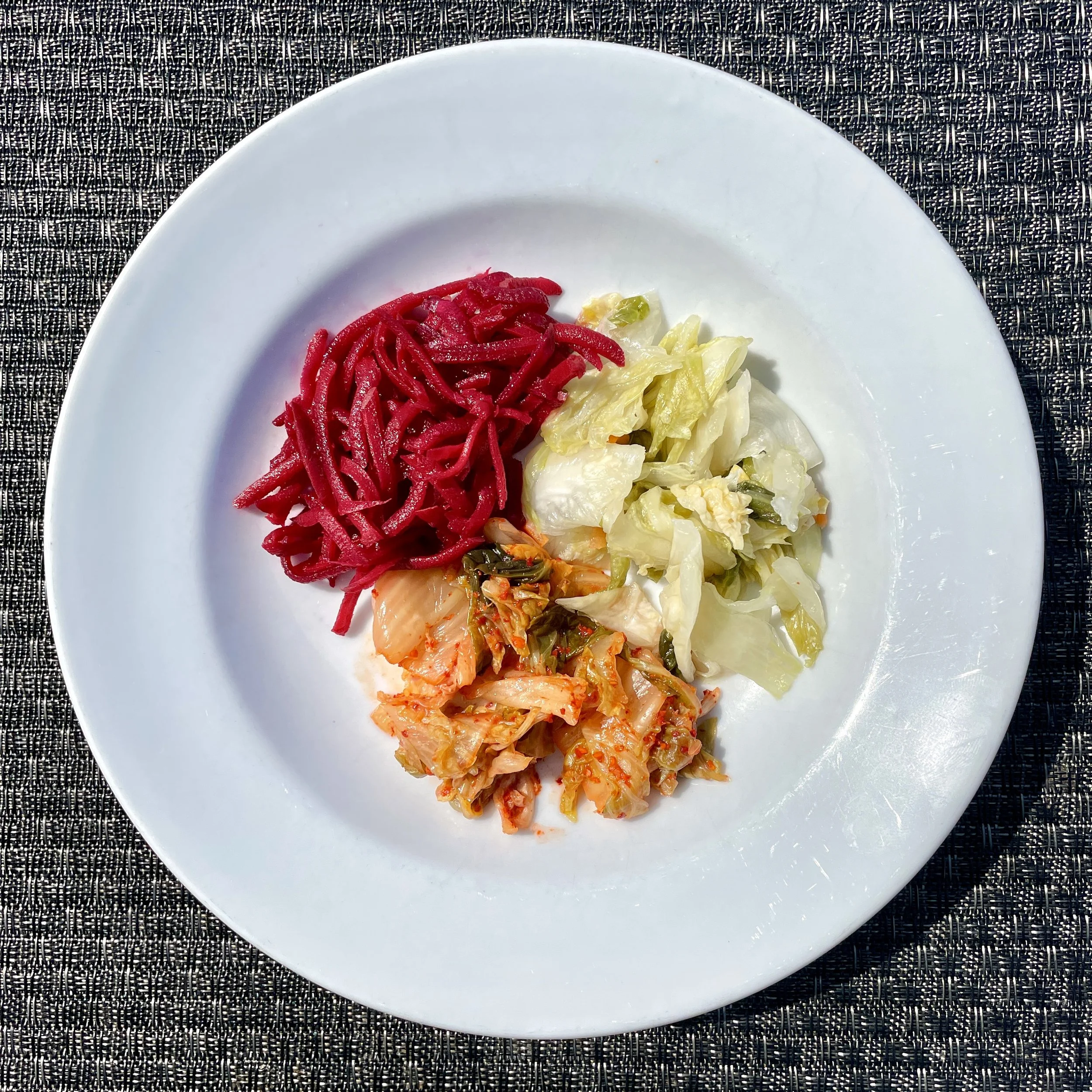Fermented Foods
Adding fermented foods into our diets is one of the most powerful actions we can take to improve our microbiomes. Increasing our consumption of fermented foods will rapidly seed our microbiomes with new microbe species contributing to both its richness and diversity.
Increased microbiome diversity has been linked to reduced disease processes, greater lifelong health, improved mood, reduced rates of neurodegenerative diseases, and increased longevity. Not only do fermented foods rapidly seed our microbiomes with helpful species, but increasing our microbiome diversity by eating fermented foods may also help us to transition more easily to a diet high in plant fiber. A fiber-rich, plant-predominant diet, in turn, will help to feed the microbe species we have in place. It’s a win-win all around.
In a 10-week study at Stanford comparing a high fiber diet (full of legumes, seeds, whole grains, nuts, veggies and fruit) and a diet high in fermented foods (rich in yogurt, kefir, kimchi and other fermented vegetables), researchers found that the diet high in fermented foods led to a greater increase in microbe diversity. Effects were dose dependent, with higher gains being associated with larger serving sizes. Moreover, participants in the fermented food group had reduced levels of 19 inflammatory proteins, indicating a reduction in systemic inflammation. The proteins involved were associated with conditions such as rheumatoid arthritis and type 2 diabetes. This finding was consistent across all research subjects in the high fermented foods group, and it didn't seem to matter which fermented foods were consumed. Some subjects favored yogurt, while others preferred kombucha, kefir, or kimchi. Regardless of the type of fermented food consumed, all subjects had lowered inflammatory markers.
Interestingly, in the high fiber group, effects on inflammatory proteins diverged depending on the starting microbiome status of the participants. Individuals who started out with higher levels of microbial diversity had reductions in inflammation on the high-fiber diet, while those who had the least microbial diversity at the beginning of the study had slight increases in inflammation when they ate more fiber. For those who started with a microbiome lacking in diversity, much of the fiber was found to go through their digestive tracts undigested. The researchers speculated that the participants who started with low microbiome diversity lacked microbes to digest the fiber they were consuming. This finding could help explain why some individuals experience bloating and other GI discomfort when they start a high fiber, plant-centered diet. Individuals who experience symptoms when eating high fiber diets may simply not yet have the microbe species in place to adequately digest the fiber consumed.
The researchers hypothesized that initial seeding with fermented foods might provide an easier transition to a plant-rich, high-fiber diet. They are planning a future study to investigate this topic. In the meantime, if you are struggling with tummy issues like bloating and loose stools, quickly upping your microbial diversity by eating fermented foods daily might allow you to then tolerate increased levels of plant fiber without issue. If you want to fast-track the process to a high-fiber diet with limited GI discomfort, fermented foods may be your quickest route forward.
www.biorxiv.org/content/biorxiv/early/2020/10/12/2020.09.30.321448.full.pdf
If you are interested in learning more about this topic, Simon Hill recently had the Stanford researchers on his podcast to discuss this fascinating study. You can find it on Simon Hill's The Proof podcast, episode 191. www.player.whooshkaa.com/episode?id=955672
Wishing you all healthy tummies and happy eating.
🌱💕
